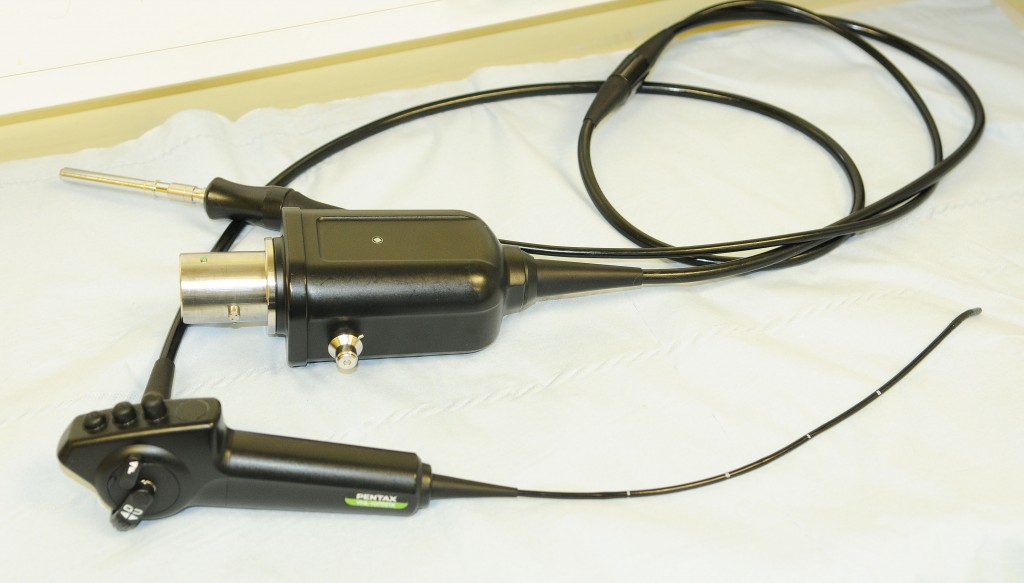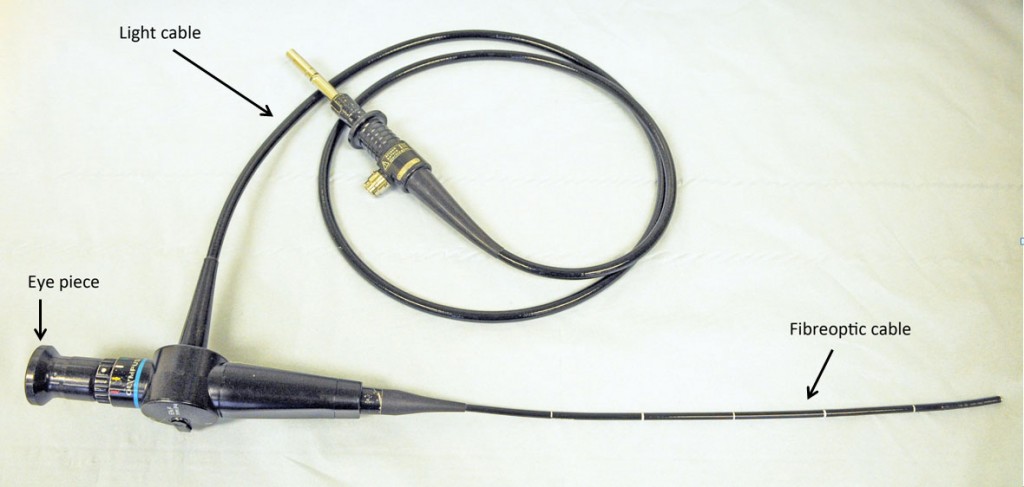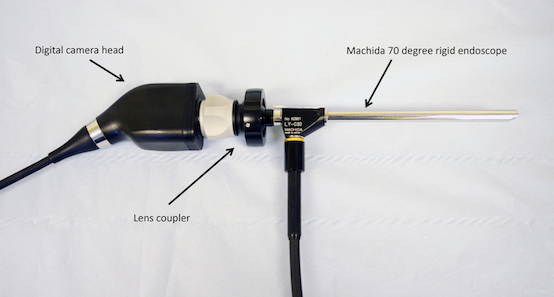Endoscopy: Looking at the vocal folds
The vocal folds are tucked away in the larynx and are difficult to view. The simplest method is to place a small mirror at the back of the throat (indirect laryngoscopy). This method is rarely used now as the view is much better using an endoscope.
The two commonest methods of examing the larynx are:
- flexible nasoendoscopy
- rigid laryngoscopy
Flexible nasoendoscopy
Flexible nasoendoscopy involves passing a narrow lighted flexible tube through the nose into the throat. Flexible endoscopes are allow the person being examined to talk or sing relatively normally. It is possible to see vocal folds moving, changes in laryngeal height and pharyngeal shape with sound colour, and also supraglottic patterns of constriction with the vocal modes.
There are two main types of flexible endoscope:
- Fibreoptic nasoendoscope (Figure 1) This consists of bundles of light-conducting glass fibres which allow light to be shone on the vocal folds and images of the larynx to be transmitted to the eye-piece. It is possible to look directly through the eye-piece or attach a camera to it so the images can be seen on a computer screen or TV monitor.

Figure 1: Olympus ENF-P4 (3.6mm diameter) Fibreoptic flexible nasoendoscope
- Videooscope (Figure 2) This is also known as a ‘chip on the tip’ endoscope because there is a miniature camera (CCD) built into the tip. It gives high-quality digital images of the larynx and vocal tract. Some videoscopes are now ‘HD’ quality although they tend to wider in diameter and more uncomfortable for the person being examined so are not widely used at present.

Figure 2: Pentax VNL-1070STK (3.1mm diameter) videoscope
Rigid endoscopy
- Rigid endoscopy (Figure 3) involves placing a small rigid tube in the mouth while the tongue is being held gently. There is a 70° or 90° prism at the tip of the endoscope which allows a view down the throat. This technique gives some of the best images of the vocal folds particularly when an HD videocamera is attached to the eyepiece of the endoscope because of the excellent optics of the lenses in the endoscope and the magnified images. This is particularly useful when used with stroboscopy. The limitations are that it is only possible to make a sustained /i/, /ai/ or /oo/ vowel sound to get a view so is not able to sing or talk. It is also it is difficult if the person has a brisk gag reflex.

Figure 3: Machida 70° (10mm diameter) rigid endoscope (type LY-C30 62B).
Written by: Julian McGlashan
